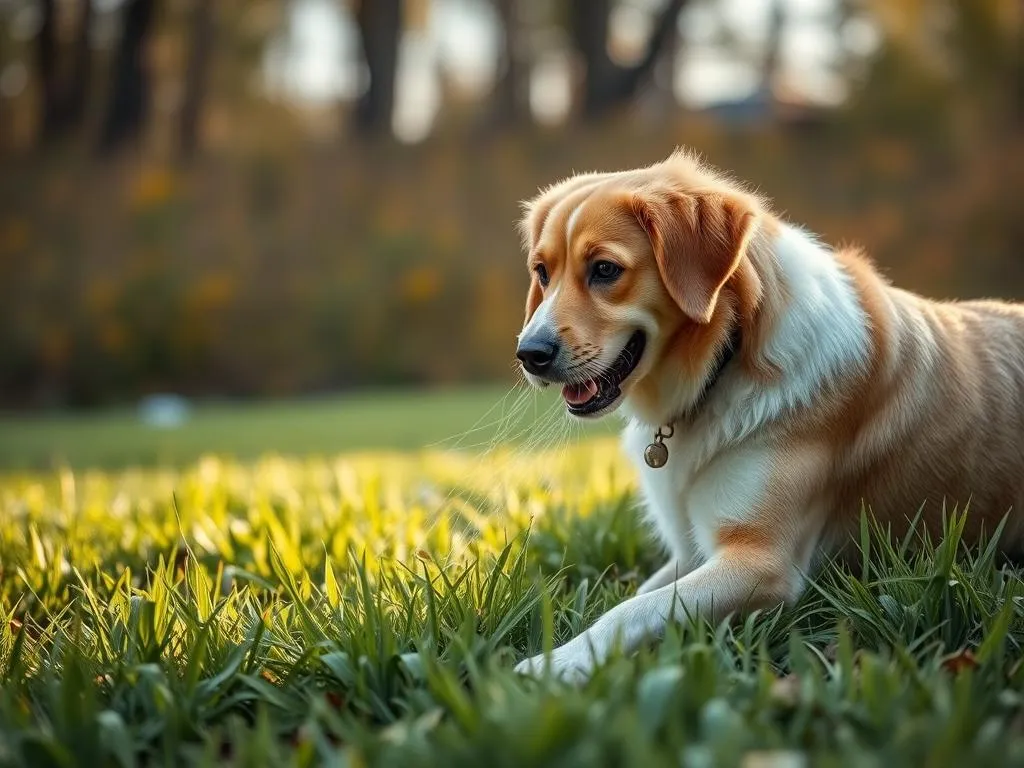
Dog owners cherish their furry companions, but one of the unfortunate downsides of pet ownership is the impact of dog urine on our beloved lawns. Dog pee can kill grass, leaving behind unsightly brown patches that detract from the overall beauty of our outdoor spaces. Understanding how to stop dog pee from killing grass is crucial for maintaining a lush, green yard that both pets and humans can enjoy.
Understanding the Issue
The Composition of Dog Urine
To tackle the problem effectively, it’s essential to understand what makes dog urine so detrimental to grass. Dog urine primarily consists of nitrogen, urea, and other compounds. While nitrogen is a vital nutrient for plant growth, the concentrated levels found in dog urine can overwhelm grass, leading to burned patches. Urea, when broken down by soil microbes, further releases nitrogen, exacerbating the damage if the grass is not able to process it quickly enough.
Types of Grass Affected
Not all grasses react the same way to dog urine. Kentucky Bluegrass, for instance, is notoriously susceptible to damage, while Bermudagrass demonstrates greater resilience. Cool-season grasses typically suffer more during the summer months when temperatures rise, while warm-season grasses have a better chance of recovery. Understanding which type of grass is in your yard can help you make informed decisions about how to manage the impact of dog urine.
Preventative Measures
Training Your Dog
One of the most effective ways to mitigate the effects of dog urine on your lawn is through training.
Designating a Pee Area
Creating a specific area in your yard for your dog to urinate can significantly reduce the impact on your grass. By directing your dog to a designated spot, you can contain the damage to a small area, making it easier to manage. This approach not only protects your lawn but also helps you maintain a cleaner yard.
Using Commands
In conjunction with creating a designated pee area, teaching your dog commands can encourage them to relieve themselves in the right spot. Use commands like “go potty” or “pee here” consistently whenever you take them to the designated area. Positive reinforcement, such as treats or praise, can help reinforce this behavior.
Hydration
The amount of water your dog consumes plays a crucial role in the concentration of urine.
Encouraging your dog to drink more water can dilute their urine and minimize its harmful effects on grass. Providing fresh water at all times and considering wet dog food can help maintain hydration levels. This simple adjustment can make a significant difference in protecting your lawn.
Timing and Frequency
When and how often you allow your dog outside can also impact grass health.
Taking your dog out during cooler parts of the day, such as early morning or late evening, may lessen the stress on your lawn. Additionally, managing how frequently your dog goes out can help you monitor and mitigate damage. For instance, if you know your dog tends to urinate in specific areas, you can rotate their bathroom breaks to limit stress on any one section of grass.
Mitigation Techniques
Lawn Care Practices
Implementing specific lawn care practices can help mitigate the damage caused by dog urine.
Fertilization
Utilizing nitrogen-reducing fertilizers can help balance the nutrient levels in your lawn. Opt for fertilizers that contain slow-release nitrogen to keep your grass healthy without overwhelming it. This strategy promotes a robust lawn that can better withstand the effects of dog urine.
Watering Techniques
Watering your lawn after your dog urinates can help dilute the urine and minimize damage. Deep watering is particularly effective, as it encourages deep root growth and resilience. Aim to water your lawn thoroughly, ensuring the roots receive adequate moisture while flushing out concentrated urine.
Grass Alternatives
If your current grass variety is prone to damage, you may want to consider dog-friendly grass alternatives.
Clover and fescue are two excellent options known for their resilience against dog urine. Clover, in particular, is low-maintenance and can withstand wear and tear. While it may not provide the same aesthetic as traditional grass, it can be a practical solution for dog owners.
Soil Health
Healthy soil is fundamental to a thriving lawn.
Conducting soil tests can reveal nutrient deficiencies or imbalances that may exacerbate damage from dog urine. Improving soil quality with organic amendments like compost can enhance its ability to retain nutrients and moisture. This means your lawn has a better chance of recovering from any urine damage.
Remedies for Existing Damage
Repairing Grass Patches
If your lawn has already suffered from dog urine damage, don’t worry; there are ways to repair it.
To begin, overseeding is an effective method for rejuvenating damaged areas. Follow these steps:
- Identify Damaged Areas: Mark the patches that need attention.
- Prepare the Soil: Rake the area to loosen the soil and create a good seedbed.
- Sow New Seeds: Choose a seed mix that matches your existing grass type and spread it evenly over the patched area.
- Water Regularly: Keep the area consistently moist until the new grass establishes itself.
Lawn Recovery Products
There are various commercial products available that can aid in lawn recovery.
Look for products specifically designed to repair dog-urine-damaged lawns. These often contain a mix of nutrients, grass seeds, and soil amendments. Alternatively, DIY solutions like spreading compost or topsoil can also help revitalize your grass.
Maintaining Lawn Health
Once your lawn begins to recover, regular maintenance is key to keeping it healthy.
Ensure you mow regularly, water deeply, and fertilize appropriately. This will not only help your grass recover from damage but also improve its overall resilience against future incidents.
Long-Term Solutions
Landscaping Alternatives
If you find that your lawn struggles with the effects of dog urine, consider exploring landscaping alternatives.
Using materials like gravel or mulch in specific areas can create a more durable surface that withstands wear and tear. Additionally, incorporating pathways and play areas that are less sensitive to urine can help protect your grass while providing a functional outdoor space for your dog.
Professional Help
In some cases, enlisting the help of a professional lawn care service may be beneficial.
A lawn care expert can provide tailored advice based on your specific grass type and local climate conditions. They can also recommend and apply treatments that may not be feasible for the average homeowner, giving your lawn the best chance at recovery and resilience.
Conclusion
Maintaining a healthy lawn despite the challenges posed by dog urine is entirely possible with the right strategies. From training your dog and managing hydration to implementing effective lawn care practices, there are numerous ways to protect your grass from damage. Remember, every lawn is unique, so it may take some experimentation to find the best solutions for your specific situation. By taking proactive steps, you can enjoy a beautiful, green yard that both you and your dog can appreciate.









